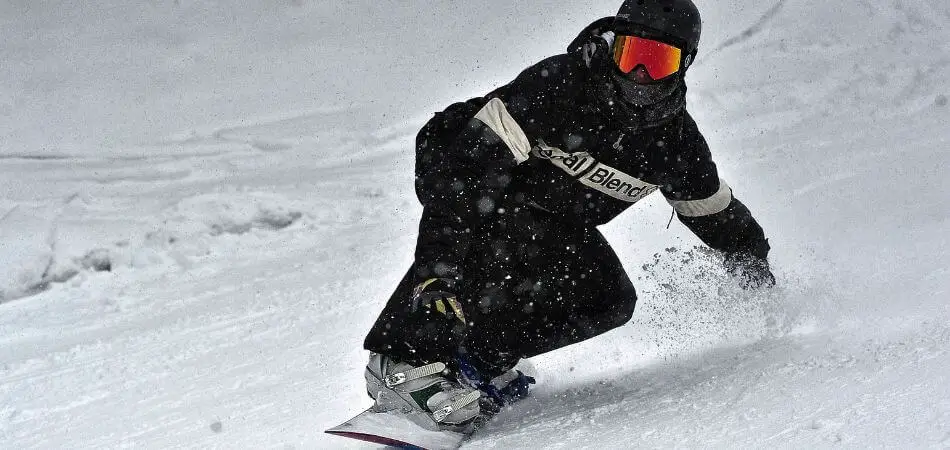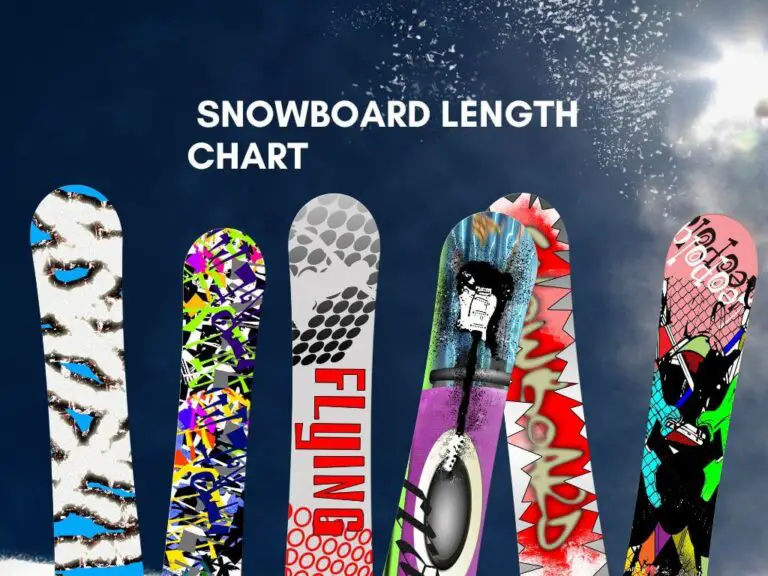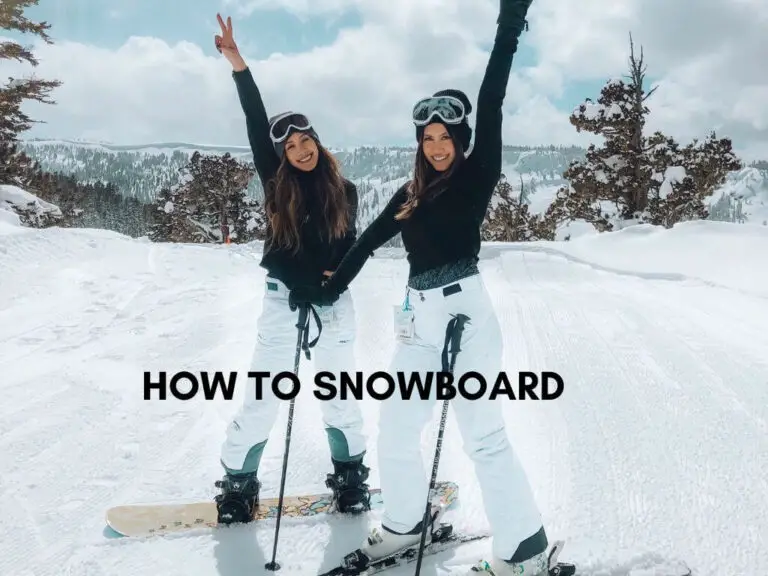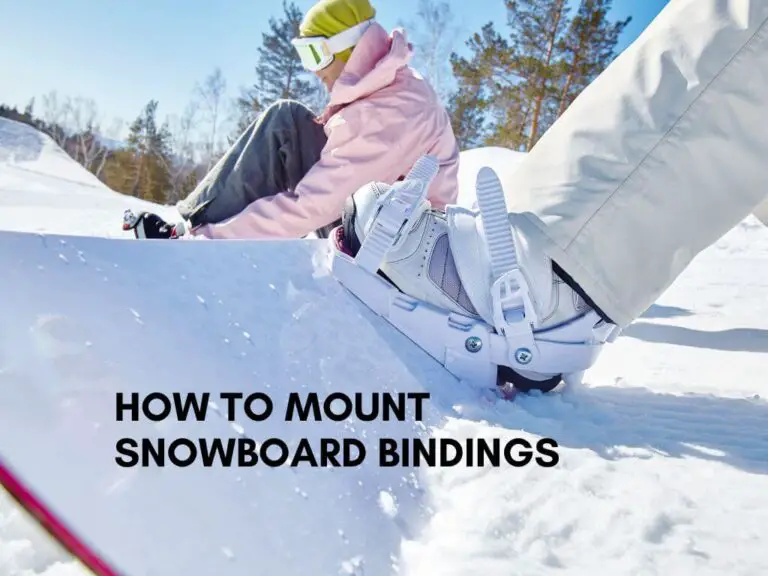Choosing the right snowboard size can make or break your time on the slopes. Whether you’re a beginner carving your first turns or a seasoned pro chasing powder, the question “What size snowboard should I get?” is one of the most critical decisions you’ll face. The perfect fit ensures better control, improved performance, and, most importantly, a safer and more enjoyable ride. But with so many factors to consider—your height, weight, riding style, and even the type of terrain you prefer—it’s easy to feel overwhelmed.
In this guide, we’ll break down everything you need to know to find the ideal snowboard size for your needs. Say goodbye to guesswork and hello to a board that feels like it was made just for you. Let’s dive in and unlock the secrets to choosing the right snowboard size!
Choosing The Right Snowboard Size
Choosing the right size snowboard is crucial for a fun and safe ride on the slopes. A well-sized snowboard will improve your control, balance, and overall experience. This guide will help you understand how to pick the perfect snowboard size for your needs.
Factors To Consider
Several key factors determine the right snowboard size for you. Understanding these will help you make an informed decision:
- Riding Style: Are you into freestyle, all-mountain, or powder riding?
- Skill Level: Beginners usually prefer shorter boards for better control.
- Snow Conditions: Different snow conditions can affect your choice.
- Personal Preference: Your comfort and confidence are important.
Here is a quick overview of how these factors affect your choice:
| Factor | Recommendation |
|---|---|
| Riding Style | Freestyle: Shorter board; All-Mountain: Medium board; Powder: Longer board |
| Skill Level | Beginner: Shorter board; Intermediate/Expert: Varies |
| Snow Conditions | Powder: Longer board; Groomed: Any length |
| Personal Preference | Comfort is key |

Height And Weight
Your height and weight play a big role in choosing the right snowboard size. A well-sized board will provide better control and stability. Here’s how you can match your height and weight to the right snowboard size:
Height:
- If you are shorter, go for a shorter board. This helps with control and maneuverability.
- Taller riders should choose longer boards for better stability at high speeds.
Weight:
- Lighter riders benefit from shorter boards for easier turns.
- Heavier riders need longer boards to distribute their weight evenly.
Here’s a table to help you decide:
| Rider Height | Board Length (cm) |
|---|---|
| 4’10” – 5’2″ | 130-140 |
| 5’3″ – 5’6″ | 140-150 |
| 5’7″ – 6’0″ | 150-160 |
| 6’1″ and above | 160-170 |
Matching your height and weight to the right board size ensures a comfortable and enjoyable snowboarding experience.
Understanding Snowboard Sizing
Choosing the right size snowboard is crucial for an enjoyable and safe snowboarding experience. Understanding snowboard sizing can help you make the best choice. This guide will break down the key factors to consider: length, width, and waist width.
Effect Of Length
The length of your snowboard affects your control and stability. A longer board offers more stability at high speeds but is harder to maneuver. A shorter board is easier to turn but less stable. Your height, weight, and riding style determine the best length for you.
General Guidelines for Snowboard Length:
- If you are a beginner, choose a shorter board for easier control.
- If you love speed, a longer board is more stable.
- For tricks and park riding, a shorter board is better.
Snowboard Length Chart:
| Rider Height | Snowboard Length |
|---|---|
| 4’10” – 5’2″ | 130 – 140 cm |
| 5’3″ – 5’6″ | 140 – 150 cm |
| 5’7″ – 5’10” | 150 – 160 cm |
| 5’11” – 6’2″ | 160 – 170 cm |
Width And Waist Width
The width of your snowboard should match your boot size. If the board is too narrow, your boots will hang over the edges, causing drag. If it’s too wide, you won’t have good control.
Boot Size and Snowboard Width:
- Boot size 6-8: Narrow board
- Boot size 9-11: Regular board
- Boot size 12+: Wide board
Waist width is the narrowest part of the snowboard. It should be close to the width of your boots’ base. This ensures that you can easily transfer energy from your body to the board.
General Waist Width Guidelines:
- Boot size 6-8: Waist width 240-250 mm
- Boot size 9-11: Waist width 250-260 mm
- Boot size 12+: Waist width 260+ mm
Remember, the right snowboard width helps you maintain balance and control, ensuring a smoother ride.
Finding The Perfect Fit
Choosing the right snowboard size is crucial for an enjoyable and safe ride. The perfect fit depends on various factors like your riding style and the terrain you prefer. Let’s dive into how you can find the perfect snowboard size for your needs.
Riding Style
Your riding style plays a significant role in selecting the right snowboard size. Different styles require different board lengths and flexibilities. Here’s a quick guide to help you:
- Freestyle: Freestyle riders love tricks and jumps. A shorter board offers better maneuverability. Opt for a board that reaches between your shoulders and chin.
- Freeride: Freeride enthusiasts enjoy carving and speed. A longer board provides stability. Choose a board that reaches your nose or slightly above.
- All-Mountain: All-mountain riders need versatility. A medium-length board is ideal. Aim for a board that hits between your chin and nose.
Consider your weight as well. Heavier riders need longer boards for stability. Lighter riders can go for shorter boards for better control. Here’s a general weight-to-board size table:
| Weight (lbs) | Board Length (cm) |
|---|---|
| 100-130 | 135-145 |
| 130-160 | 145-155 |
| 160-190 | 155-165 |
| 190+ | 165+ |
Terrain
The terrain you ride on also influences your snowboard size. Different terrains demand different board characteristics. Here’s how to match your snowboard size to the terrain:
- Park: Parks feature rails, boxes, and jumps. Shorter boards are better for tricks. Choose a board that reaches between your shoulders and chin.
- Piste: Groomed runs require precision and control. A medium-length board is suitable. Aim for a board that hits between your chin and nose.
- Backcountry: Backcountry terrain is unpredictable. Longer boards provide stability and float in powder. Opt for a board that reaches your nose or slightly above.
Consider the snow conditions as well. Powder requires longer boards for floatation. Icy conditions benefit from shorter boards for control. Here’s a quick reference:
| Terrain Type | Recommended Board Length |
|---|---|
| Park | Shoulders to Chin |
| Piste | Chin to Nose |
| Backcountry | Nose or Above |
Finding the perfect fit for your snowboard enhances your ride. Consider your riding style and the terrain to make an informed decision.

Testing And Adjusting
Choosing the right snowboard size is crucial for an enjoyable ride. After selecting a board, testing and adjusting is the next step. This ensures the board fits your style and needs.
On-snow Testing
On-snow testing is essential to see how the snowboard performs in real conditions. Start with short runs on familiar trails. Pay attention to how the board handles turns and speed.
Here are some key points to focus on during on-snow testing:
- Stability: Check if the board feels stable at different speeds.
- Edge Control: See how well the edges grip the snow.
- Flexibility: Notice if the board bends easily or feels stiff.
- Comfort: Ensure your feet and body feel comfortable on the board.
Below is a table summarizing what to look for:
| Aspect | What to Check |
|---|---|
| Stability | Board stability at various speeds |
| Edge Control | Edge grip on snow |
| Flexibility | Board flexibility |
| Comfort | Overall comfort during the ride |
Making Adjustments
After testing, you may need to make adjustments. These tweaks ensure the snowboard is perfect for you.
Consider these adjustments:
- Binding Position: Adjust the bindings for better control and comfort.
- Stance Width: Change the stance width to match your shoulder width.
- Angle Settings: Adjust the binding angles to suit your riding style.
- Flex Adjustments: If possible, change the board’s flex to be softer or stiffer.
Here are some tips for each adjustment:
- Binding Position: Move bindings forward or backward for better balance.
- Stance Width: A wider stance offers more stability, while a narrower stance gives better maneuverability.
- Angle Settings: Experiment with different angles to find the most comfortable and efficient setup.
- Flex Adjustments: Softer flex is good for beginners, while stiffer flex suits experienced riders.
Making these adjustments can significantly improve your snowboarding experience. Always test after making changes to see the impact.
Frequently Asked Questions
How Do You Determine Your Snowboard Size?
Determine snowboard size by your height, weight, and riding style. Use a snowboard size chart for accurate measurements. Ensure the board reaches between your chin and nose. Choose a wider board for larger feet.
What Size Snowboard For A 5’4″ Woman?
A 5’4″ woman typically needs a snowboard between 140-145 cm. Choose based on your weight and riding style.
What Size Snowboard Should I Get For My Shoe Size?
Choose a snowboard with a waist width matching your shoe size. For sizes 10-11, aim for 250mm+ width. Sizes 11. 5+ need wider boards (260mm+).
How Do I Know What Kind Of Snowboard To Get?
Consider your skill level, riding style, and terrain preferences. Check size charts for proper length and width.
Conclusion
Choosing the right snowboard size is crucial for an enjoyable ride. Consider your weight, height, and skill level. Always test different sizes to find the perfect fit. A well-chosen snowboard enhances performance and safety on the slopes. Invest time in finding the right size for the best snowboarding experience.








